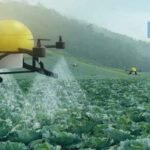AI and Genome Sequencing: AI’s contribution to accelerating genomic research and precision medicine.
The field of genomics has been transformed by the emergence of artificial intelligence (AI), ushering in a new era of scientific discovery and medical advancements. Genome sequencing, once a time-consuming and labor-intensive process, is now turbocharged by AI algorithms. This dynamic fusion of biology and technology holds the key to unraveling the mysteries of our DNA and revolutionizing the landscape of precision medicine. In this article, we delve into the profound impact of AI in genome sequencing and its contribution to the advancement of precision medicine.
I. The Genomic Revolution
The human genome, a blueprint of our genetic makeup, holds the secrets to understanding our susceptibility to diseases, developing targeted therapies, and advancing personalized healthcare. However, the enormity and complexity of genomic data have posed significant challenges to researchers, making AI an indispensable ally in the pursuit of unlocking genetic insights.
II. AI-Powered Genome Sequencing
- Data Analysis at Scale AI algorithms process vast amounts of genomic data with remarkable speed and accuracy, enabling researchers to analyze entire genomes and identify genetic variations associated with diseases.
- Variant Calling and Interpretation AI assists in accurately identifying genetic variants and interpreting their potential implications for health. These insights guide the development of personalized treatment plans.
- Drug Discovery and Development AI analyzes genomic data to predict how specific drugs will interact with an individual’s genetic makeup. This accelerates drug discovery by identifying potential candidates and reducing trial and error.
- Disease Prediction and Prevention AI-powered genomics can predict an individual’s risk of developing certain diseases, allowing for early interventions and personalized preventive strategies.
III. Real-Life Impact of AI in Genome Sequencing
- Cancer Genomics AI-driven genomic analysis helps identify genetic mutations driving cancer growth. Precision oncology leverages this information to tailor treatments and improve patient outcomes.
- Rare Diseases AI enables rapid diagnosis of rare genetic disorders by pinpointing disease-causing mutations, helping patients receive accurate and timely care.
- Pharmacogenomics AI predicts individual responses to medications based on genetic variations, minimizing adverse effects and optimizing treatment outcomes.
IV. Precision Medicine: From Concept to Reality
The marriage of AI and genome sequencing propels us closer to the vision of precision medicine, where treatments are tailored to an individual’s unique genetic profile. This shift from a one-size-fits-all approach to targeted therapies has the potential to transform healthcare outcomes and improve patient quality of life.
V. Ethical Considerations and Future Directions
While AI’s impact on genome sequencing and precision medicine is profound, it also raises ethical questions regarding data privacy, consent, and equitable access to genetic insights. Balancing technological advancements with ethical considerations is pivotal as we navigate the evolving landscape of genomic research.


































